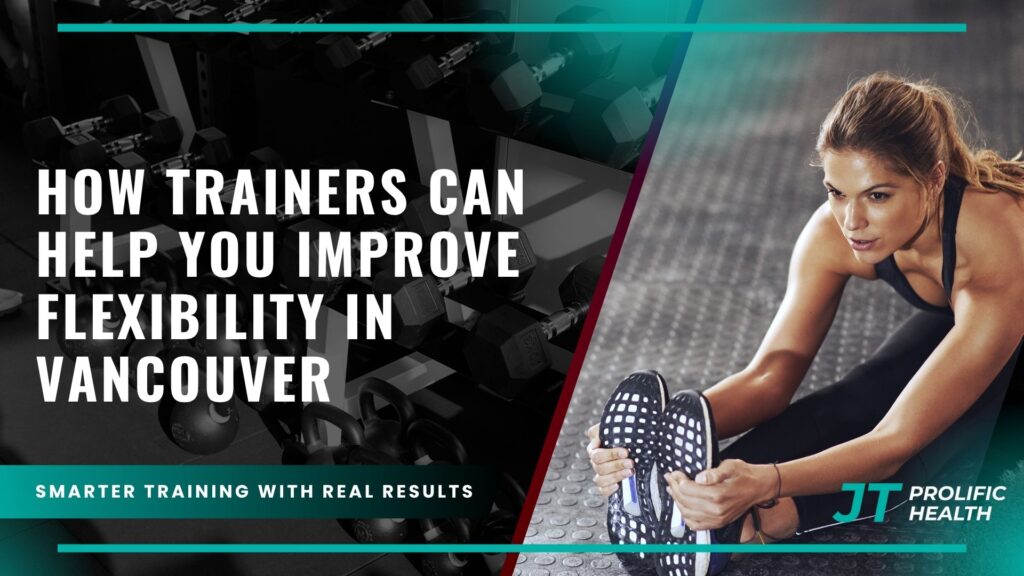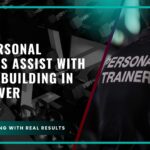Flexibility is often the overlooked component of fitness that can make or break your overall physical performance and daily comfort. In Vancouver’s active lifestyle culture, where residents regularly engage in hiking, cycling, skiing, and various outdoor activities, maintaining optimal flexibility becomes crucial for both performance enhancement and injury prevention. Many people struggle with tight muscles, limited range of motion, and the frustrating feeling that their bodies aren’t moving as freely as they once did.
The reality is that flexibility doesn’t just happen naturally for most adults. As we age and spend more time in sedentary positions—whether at desks, in cars, or on couches—our muscles naturally tighten and our joints lose mobility. This gradual loss of flexibility can lead to poor posture, increased injury risk, reduced athletic performance, and even chronic pain conditions that significantly impact quality of life.
This is where professional guidance becomes invaluable. Personal trainers who specialize in flexibility and mobility work bring a wealth of knowledge about human anatomy, movement patterns, and progressive stretching techniques that can safely and effectively restore your body’s natural range of motion. They understand the intricate relationship between different muscle groups, how to address compensation patterns, and most importantly, how to create personalized programs that work with your body’s unique limitations and goals.
Working with a qualified trainer for flexibility improvement offers numerous advantages over attempting to stretch on your own. Professional trainers can identify specific areas of tightness, teach proper stretching techniques, ensure you’re progressing safely, and integrate flexibility work into a comprehensive fitness program. They also provide the accountability and motivation that many people need to maintain consistent stretching routines, which is essential for seeing real improvements in flexibility.
Vancouver’s fitness community has embraced this approach, with many residents discovering that professional flexibility training not only improves their physical capabilities but also enhances their overall well-being and confidence in movement.
Key Takeaways
For additional context, see this comprehensive guide.
- Professional Assessment is Essential: Qualified trainers can identify specific flexibility limitations, muscle imbalances, and movement restrictions that you might not notice on your own, creating targeted programs that address your unique needs.
- Proper Technique Prevents Injury: Learning correct stretching techniques from a professional ensures you’re improving flexibility safely without risking muscle strains, joint damage, or other injuries that can set back your progress.
- Progressive Programming Delivers Results: Trainers design systematic flexibility programs that gradually increase intensity and complexity, ensuring steady improvement while respecting your body’s adaptation timeline.
- Integration with Overall Fitness: Professional trainers seamlessly incorporate flexibility work into comprehensive fitness programs, balancing strength training, cardiovascular exercise, and mobility work for optimal results.
- Accountability and Motivation: Regular sessions with a trainer provide the consistency and encouragement needed to maintain stretching routines, which is crucial for achieving lasting flexibility improvements.
- Personalized Modifications: Trainers adapt exercises for individual limitations, injuries, or specific goals, ensuring that everyone can participate safely regardless of their starting flexibility level.
- Education and Empowerment: Working with a professional teaches you to understand your body better, recognize tension patterns, and eventually maintain flexibility independently with confidence and knowledge.
Understanding Professional Flexibility Training
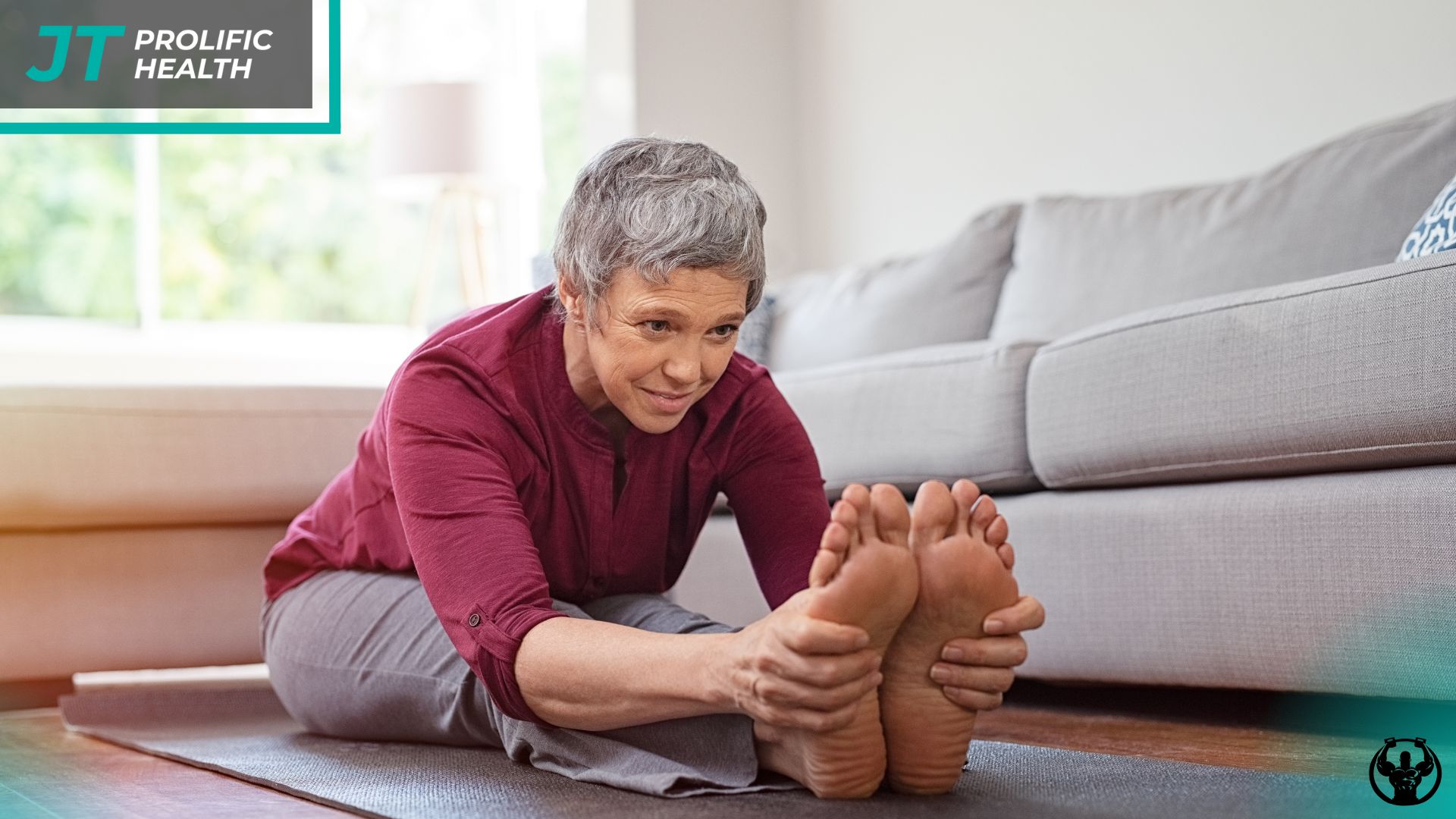
For additional context, see detailed information on this topic.
Professional flexibility training goes far beyond basic stretching routines you might find in fitness apps or generic workout videos. When you work with a qualified trainer in Vancouver, you’re accessing expertise in human movement science, anatomy, and personalized program design that can dramatically accelerate your flexibility improvements while ensuring your safety throughout the process.
The foundation of professional flexibility training begins with comprehensive assessment. Experienced trainers evaluate your current range of motion in all major joints, identify muscle imbalances, assess posture, and understand your movement history. This detailed evaluation reveals not just where you’re tight, but why certain areas have become restricted and how different limitations might be connected throughout your body’s kinetic chain.
Professional trainers utilize various specialized techniques that aren’t commonly known or safely performed without proper training. These include proprioceptive neuromuscular facilitation (PNF) stretching, myofascial release techniques, dynamic mobility work, and targeted strengthening exercises that support improved flexibility. Each technique serves specific purposes and requires precise application to be both safe and effective.
The systematic approach that professional trainers bring to flexibility work ensures progressive improvement. Rather than randomly stretching different muscles, they create structured programs that build upon previous sessions, gradually increasing intensity and complexity as your body adapts. This methodical progression prevents plateaus and reduces the risk of overuse injuries that can occur when people push too hard too quickly on their own.
Assessment and Personalized Program Development
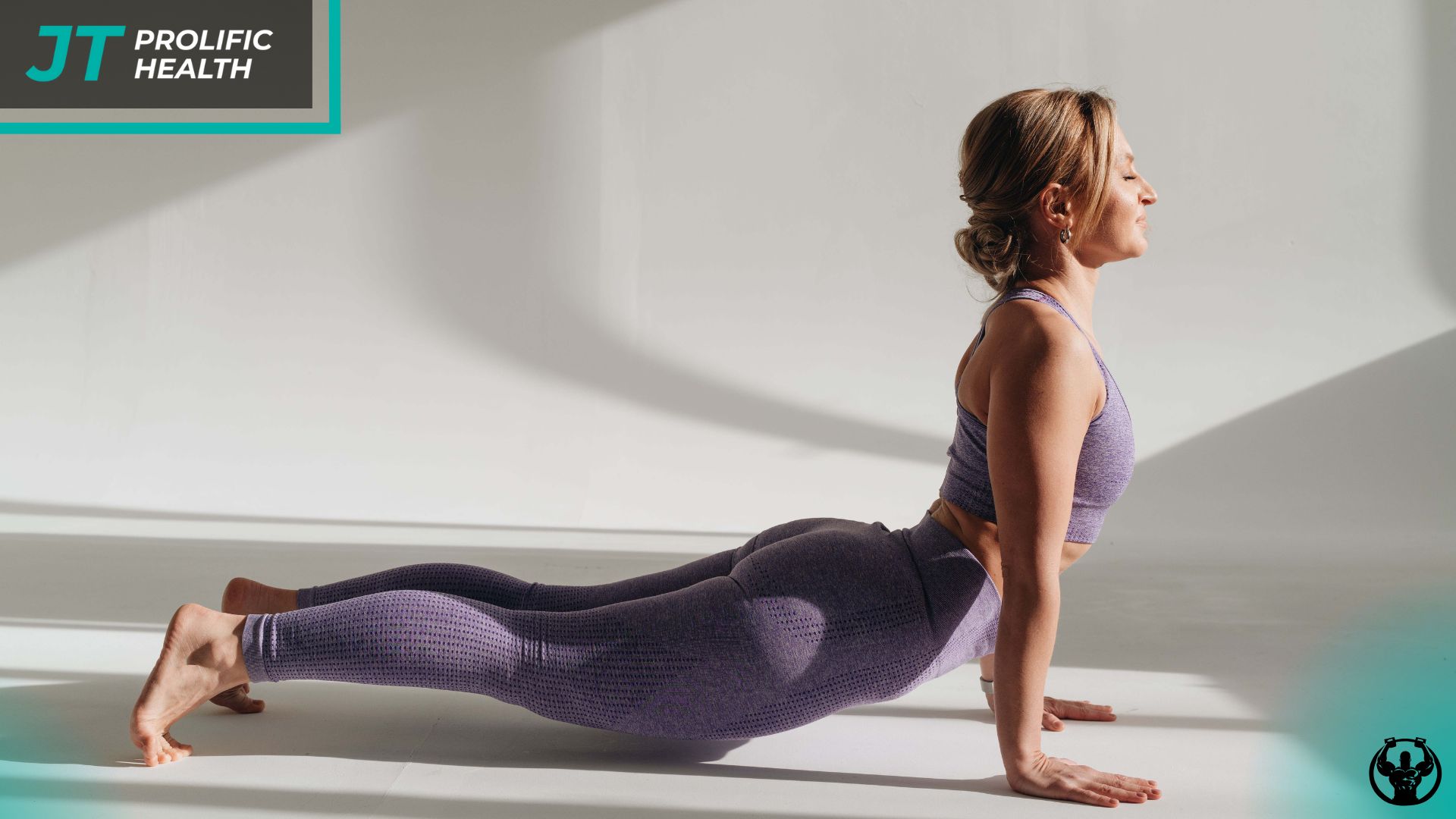

For additional context, see our in-depth resource.
The journey toward improved flexibility begins with a thorough assessment that goes far beyond simple “touch your toes” tests. Professional trainers in Vancouver employ sophisticated evaluation methods to understand your body’s unique flexibility profile and create programs that address your specific needs and limitations.
During the initial assessment, trainers examine joint mobility in multiple planes of movement, testing everything from shoulder rotation and hip flexion to spinal extension and ankle dorsiflexion. They observe how you move naturally, noting compensation patterns where tight areas force other parts of your body to work harder or move differently than intended. This comprehensive evaluation reveals the interconnected nature of flexibility limitations throughout your body.
Trainers also consider your lifestyle factors, exercise history, previous injuries, and specific goals when developing your flexibility program. Someone who sits at a desk all day will have different needs than an athlete preparing for competition, and someone recovering from an injury requires careful modifications that support healing while improving mobility. This personalized approach ensures that your program not only improves flexibility but also supports your overall health and fitness objectives.
The program development process involves selecting appropriate techniques, determining optimal frequency and duration for sessions, and establishing realistic timelines for achieving specific flexibility goals. Professional trainers understand that flexibility improvements take time and require consistent effort, so they create programs that are challenging enough to produce results but sustainable enough to maintain long-term adherence.
Regular reassessment is a crucial component of professional flexibility training. As your mobility improves, trainers adjust your program to continue challenging your body appropriately. They track progress objectively, celebrate improvements, and modify techniques when needed to overcome plateaus or address new limitations that may emerge as your body changes. For those interested in understanding how professionals develop comprehensive fitness programs, our detailed guide on creating effective workout plans provides valuable insights into this systematic approach.
Specialized Techniques and Methods
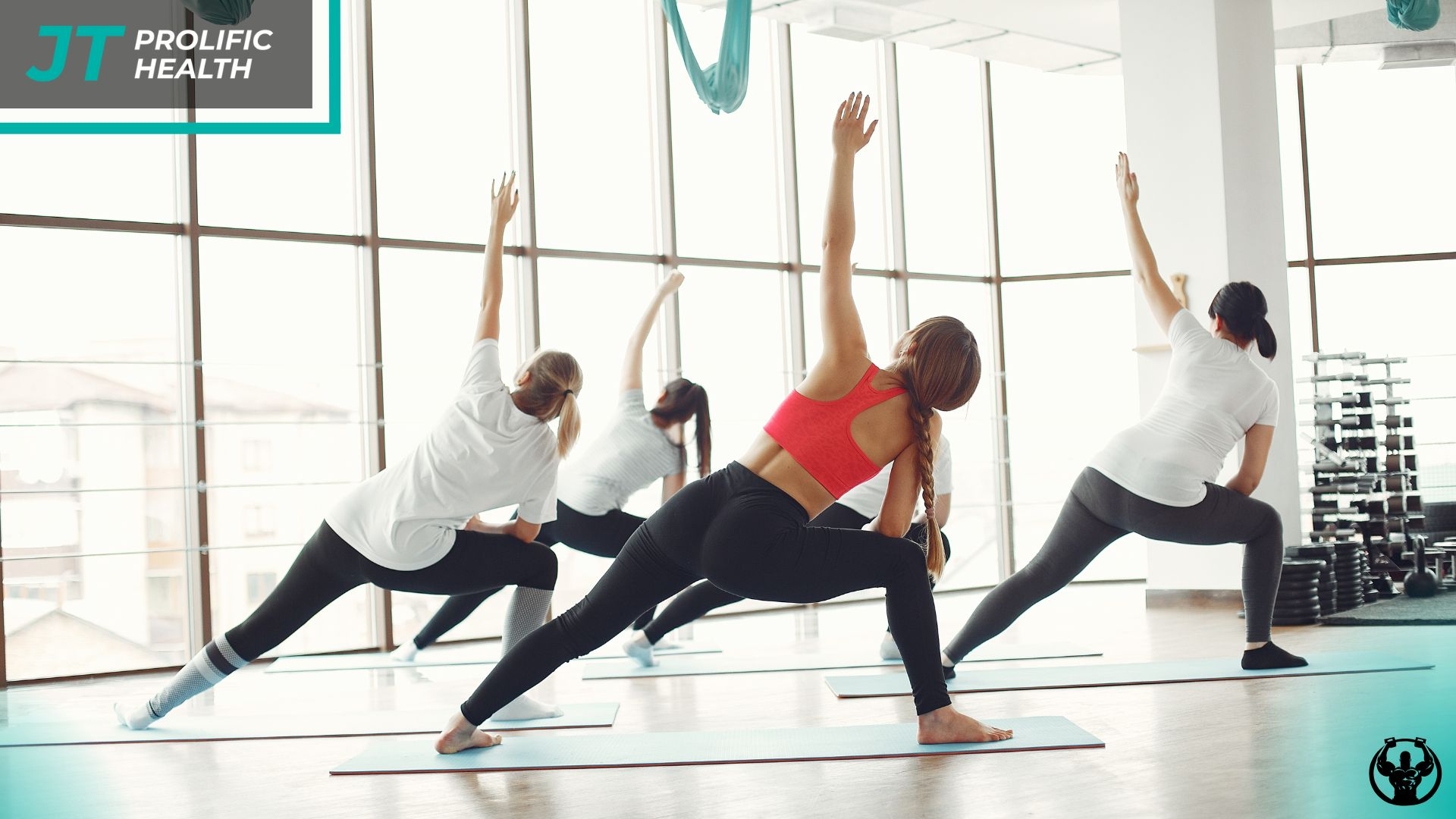

Professional trainers employ a diverse arsenal of specialized flexibility techniques that go far beyond basic static stretching. These advanced methods, when applied correctly, can produce dramatic improvements in mobility and range of motion while minimizing the risk of injury that often accompanies unsupervised stretching attempts.
Proprioceptive Neuromuscular Facilitation (PNF) stretching represents one of the most effective techniques in a trainer’s toolkit. This method involves contracting and relaxing specific muscle groups in precise sequences to achieve deeper stretches than traditional methods allow. PNF stretching requires partner assistance and expert knowledge of muscle anatomy to perform safely, making it an ideal example of why professional guidance is so valuable for serious flexibility improvement.
Dynamic stretching and mobility work form another crucial component of professional flexibility training. Unlike static stretches that hold positions for extended periods, dynamic movements take joints through their full range of motion while gradually increasing speed and amplitude. Trainers design dynamic warm-up sequences that prepare your body for activity while simultaneously improving flexibility over time.
Myofascial release techniques, including targeted foam rolling and manual therapy approaches, address the connective tissue that surrounds and supports your muscles. Professional trainers understand how to identify areas of fascial restriction and apply appropriate pressure and movement to restore normal tissue quality. This work often provides immediate improvements in flexibility and can address chronic tension patterns that resist traditional stretching approaches.
Active isolated stretching (AIS) is another sophisticated technique that involves holding stretches for short periods while actively contracting opposing muscle groups. This method works with your body’s natural reflexes to achieve deeper stretches safely and can be particularly effective for athletes or individuals with specific sport-related flexibility needs. The precision required for effective AIS makes professional instruction essential for optimal results. When injuries are present, trainers must carefully adapt these techniques, and you can learn more about how professionals modify exercises for injuries to ensure safe and effective training.
Integration with Strength and Conditioning
One of the most significant advantages of working with professional trainers for flexibility improvement is their ability to integrate mobility work seamlessly with strength training and cardiovascular conditioning. This holistic approach ensures that your flexibility gains support and enhance your overall fitness rather than existing in isolation.
Strength training and flexibility work complement each other in ways that many people don’t realize. Stronger muscles can better control and maintain improved ranges of motion, while better flexibility allows for more effective strength training by enabling proper exercise form and reducing compensation patterns. Professional trainers understand these relationships and design programs that develop both qualities simultaneously.
The concept of “active flexibility” is central to this integrated approach. Rather than simply being able to passively stretch into a position, active flexibility involves having the strength and control to move into and maintain positions using your own muscular effort. This type of flexibility is more functional and transferable to real-world activities and sports performance.
Trainers also understand the importance of timing when combining flexibility work with other training components. They know when to emphasize static stretching versus dynamic mobility, how to sequence different types of exercises within a session, and how to balance the stress of strength training with the recovery benefits of flexibility work. This sophisticated programming prevents overuse injuries and optimizes the benefits of each training component.
The integration extends to cardiovascular training as well. Many trainers incorporate movement-based cardio activities that simultaneously improve fitness and flexibility, such as yoga flows, martial arts-inspired movements, or dance-based exercises. This approach maximizes training efficiency while keeping workouts engaging and varied. For busy professionals who struggle to find time for comprehensive fitness programs, this integrated approach can be particularly valuable, as discussed in our guide on supporting busy professionals with their fitness goals.
Addressing Common Flexibility Challenges
Professional trainers encounter and successfully address a wide range of flexibility challenges that commonly affect Vancouver residents. From desk workers dealing with chronic hip tightness to athletes struggling with sport-specific mobility limitations, experienced trainers have developed effective strategies for overcoming the most stubborn flexibility issues.
Hip flexor tightness represents one of the most prevalent flexibility problems in modern society. Hours of sitting create chronically shortened hip flexors that can lead to lower back pain, poor posture, and reduced athletic performance. Professional trainers address this issue through multi-faceted approaches that include targeted stretching, strengthening of opposing muscle groups, and movement re-education that helps clients develop better daily habits.
Shoulder mobility restrictions are another common challenge, particularly among individuals who spend significant time at computers or engage in activities with repetitive overhead movements. Trainers use specialized techniques to address the complex three-dimensional movement requirements of the shoulder joint, often discovering that apparent shoulder problems actually originate from thoracic spine restrictions or postural imbalances.
Hamstring tightness, while seemingly straightforward, often involves complex interactions between the posterior chain muscles, pelvic position, and neural tension. Professional trainers can differentiate between true muscle tightness and neural restrictions, applying appropriate techniques for each situation. They also address the strength imbalances that often contribute to chronic hamstring tightness, particularly weak glutes and core muscles.
Age-related flexibility decline presents unique challenges that require specialized approaches. Trainers working with older adults understand how to progress carefully, account for joint changes, and emphasize functional flexibility that supports daily activities. They also recognize when flexibility limitations might indicate underlying health issues that require medical attention.
For individuals recovering from injuries, flexibility work requires careful modification and progression. Professional trainers understand how different injuries affect movement patterns and can design programs that support healing while gradually restoring normal mobility. Their expertise becomes crucial in distinguishing between normal stretching sensations and potentially harmful pain that could indicate re-injury. Those interested in the rehabilitation aspects of training can find detailed information about how trainers support injury recovery through specialized programming.
Prolific Health’s Approach to Flexibility Training
At Prolific Health, the approach to flexibility training embodies the highest standards of professional practice, combining evidence-based techniques with personalized attention to help Vancouver residents achieve their mobility goals safely and effectively. The team understands that flexibility improvement is not a one-size-fits-all endeavor and requires careful assessment, individualized programming, and ongoing support to achieve lasting results.
The Prolific Health methodology begins with comprehensive movement screening that goes beyond basic flexibility tests to understand how clients move in real-world situations. This functional assessment reveals not just where restrictions exist, but how these limitations affect daily activities, exercise performance, and overall quality of life. The team uses this information to prioritize interventions and set realistic, meaningful goals that align with each client’s lifestyle and aspirations.
Education forms a cornerstone of Prolific Health’s flexibility training programs. Clients learn not just what exercises to perform, but why specific techniques are chosen, how their body responds to different approaches, and what they can do independently to support their progress. This educational component empowers clients to take ownership of their flexibility journey and maintain improvements long after formal training concludes.
The integration of flexibility work with other training components reflects Prolific Health’s holistic approach to fitness. Rather than treating flexibility as an add-on to strength or cardiovascular training, the team designs comprehensive programs where mobility work enhances and is enhanced by other fitness components. This integrated approach maximizes training efficiency while ensuring that flexibility improvements translate into better overall function and performance.
Prolific Health’s commitment to ongoing education and professional development ensures that clients benefit from the latest advances in flexibility training and movement science. The team regularly updates their knowledge and techniques, incorporating new research and methods that can enhance client outcomes. This dedication to excellence has established Prolific Health as a trusted resource for individuals seeking professional guidance in their flexibility journey.
Frequently Asked Questions
How long does it take to see improvements in flexibility with professional training?
Most clients begin noticing improvements in flexibility within 2-4 weeks of consistent professional training, with more significant changes typically occurring after 6-8 weeks. However, the timeline varies significantly based on your starting flexibility level, age, consistency of practice, and specific areas being addressed. Professional trainers can provide more accurate timelines based on your individual assessment and goals.
Is it better to work on flexibility before or after strength training?
The optimal timing depends on your specific goals and the type of flexibility work being performed. Dynamic stretching and mobility work are excellent before strength training as they prepare your body for movement. Static stretching is generally more beneficial after strength training when muscles are warm and more receptive to lengthening. Professional trainers design session structures that optimize the benefits of both components.
Can flexibility training help reduce chronic pain?
Professional flexibility training can be highly effective for addressing chronic pain, particularly when pain stems from muscle imbalances, postural issues, or movement restrictions. However, it’s important to work with qualified trainers who can identify when pain might require medical evaluation and can modify programs appropriately for different conditions.
How often should I work on flexibility with a trainer?
Most people benefit from 2-3 professional flexibility sessions per week initially, with the frequency potentially decreasing as you develop independence and your goals are achieved. The optimal frequency depends on your current flexibility level, goals, and how quickly you learn to perform techniques correctly on your own.
What’s the difference between flexibility and mobility training?
Flexibility refers to the passive range of motion in a joint, while mobility encompasses both flexibility and the strength to control movement through that range. Professional trainers address both components, ensuring you can not only achieve greater ranges of motion but also control and utilize them effectively in daily activities and exercise.
Can professional flexibility training help with sports performance?
Absolutely. Sport-specific flexibility training can significantly enhance athletic performance by improving movement efficiency, reducing injury risk, and allowing for more effective technique execution. Professional trainers can design flexibility programs that specifically target the movement requirements of your chosen sport or activity.
Is flexibility training safe for older adults?
When performed under professional guidance, flexibility training is not only safe for older adults but highly beneficial for maintaining independence and quality of life. Professional trainers understand how to modify techniques for age-related changes in joints and tissues, ensuring safe and effective programming for all age groups.
What should I expect during my first flexibility training session?
Your first session will typically include a comprehensive assessment of your current flexibility, discussion of your goals and health history, and introduction to basic techniques that are appropriate for your level. Professional trainers focus on education and proper technique rather than pushing for immediate dramatic improvements, ensuring a safe and positive introduction to professional flexibility training.
Conclusion
Improving flexibility under professional guidance represents one of the most valuable investments you can make in your long-term health and quality of life. The expertise that qualified trainers bring to flexibility training extends far beyond what you can achieve through self-directed stretching routines, offering sophisticated assessment techniques, specialized methods, and personalized programming that delivers superior results while prioritizing your safety.
The comprehensive approach that professional trainers take to flexibility improvement addresses not just the symptoms of tightness and restriction, but the underlying causes that create these issues. Through careful assessment, appropriate technique selection, and systematic progression, trainers help you achieve lasting improvements that enhance every aspect of your physical function and daily comfort.
Vancouver’s active lifestyle culture makes flexibility training particularly relevant for residents who want to fully enjoy the outdoor activities and recreational opportunities the city offers. Whether you’re preparing for hiking season, working to improve your athletic performance, or simply seeking relief from the physical stresses of daily life, professional flexibility training provides the foundation for moving better and feeling better in everything you do.
The journey toward improved flexibility requires patience, consistency, and expert guidance to navigate safely and effectively. By working with qualified professionals who understand the science of human movement and the art of personalized program design, you’re setting yourself up for success in achieving your flexibility goals while building a foundation for lifelong mobility and health.


